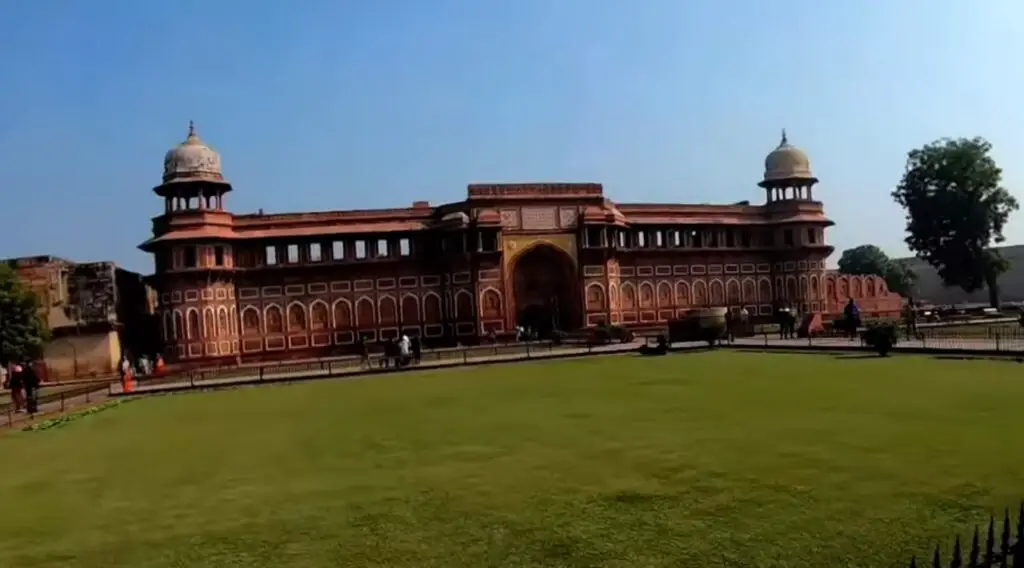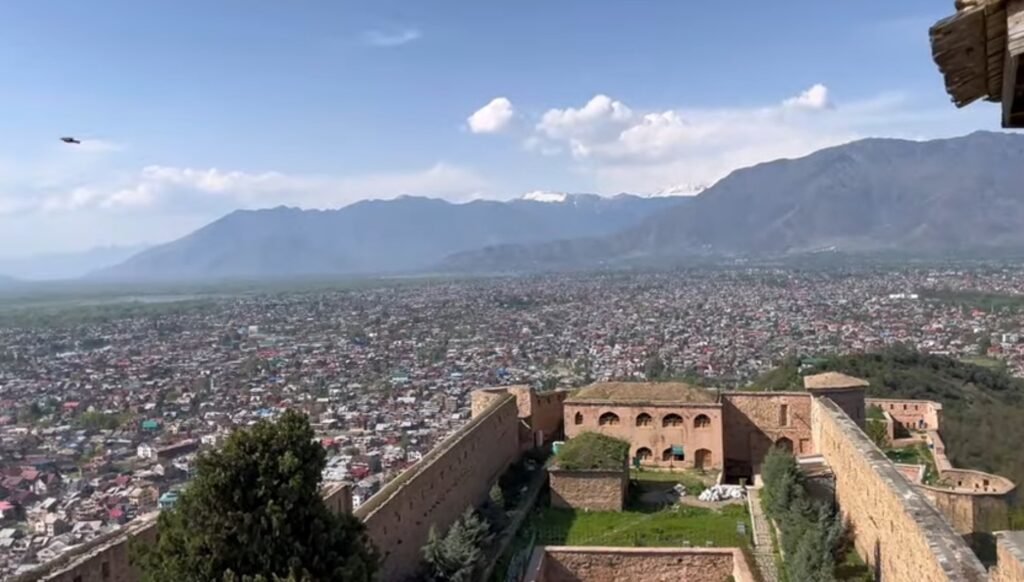The Agra Fort is a beautiful and historically significant example of Mughal architecture. Its unique blend of styles, stunning structures, and rich history make it a must-visit destination for anyone interested in Indian culture and history. The fort serves as a reminder of India’s rich heritage and the importance of preserving its cultural landmarks for future generations.
Agra Fort Location
Agra Fort, also known as the Red Fort of Agra, is a UNESCO World Heritage Site located in the city of Agra, India. The fort was built by Emperor Akbar in the mid-16th century and was later modified and expanded by his grandson, Emperor Shah Jahan, who is also known for commissioning the Taj Mahal.
Agra fort’s location on the banks of the Yamuna River also adds to its beauty and historical significance. The river was an important transportation route during the Mughal era and was used to transport goods and people between Agra and other cities.
Agra Fort’s Structure
The Agra Fort is made of red sandstone and covers an area of approximately 94 acres. The fort is surrounded by a moat and is enclosed by walls that are up to 70 feet high. The fort has several gates, including the Delhi Gate, the Lahore Gate, and the Amar Singh Gate.
Visitors to the Agra Fort can explore the fort’s beautiful structures and courtyards, as well as its museum, which displays artifacts and exhibits related to the fort’s history. The fort also offers stunning views of the nearby Taj Mahal, making it a popular spot for photography.
Architecture of the Red Fort of Agra
The fort’s architecture is a blend of Indian, Persian, and Islamic styles. The fort’s structures are arranged in a series of courtyards, each with its own unique design and purpose. The fort’s most notable structures include the Jahangiri Mahal, the Khas Mahal, the Sheesh Mahal, and the Diwan-i-Khas.
The Jahangiri Mahal was built by Emperor Akbar for his son Jahangir and is one of the oldest structures in the fort. The palace is a two-story building and features a blend of Hindu and Islamic architectural styles. The palace is known for its beautiful stone carvings and intricate balconies.
The Khas Mahal was built by Emperor Shah Jahan and served as his private residence. The palace is a three-story building and features a white marble facade. The palace’s interior is decorated with intricate carvings and beautiful paintings.
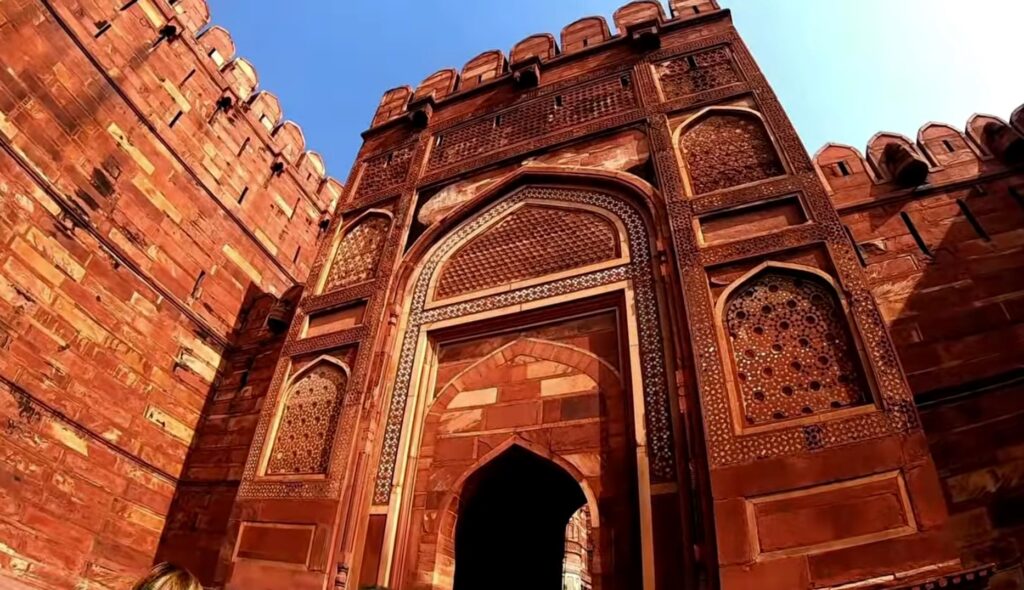
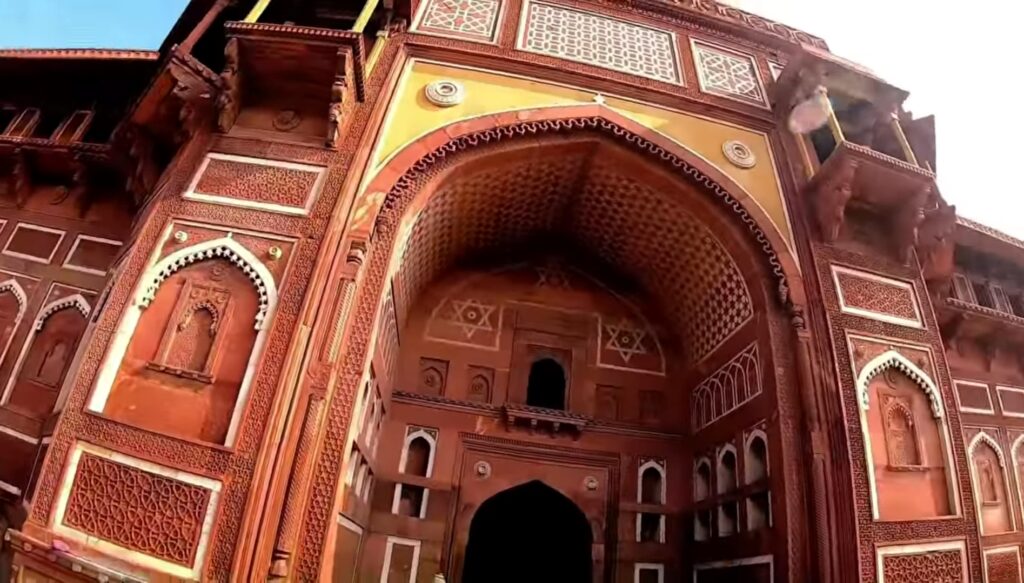
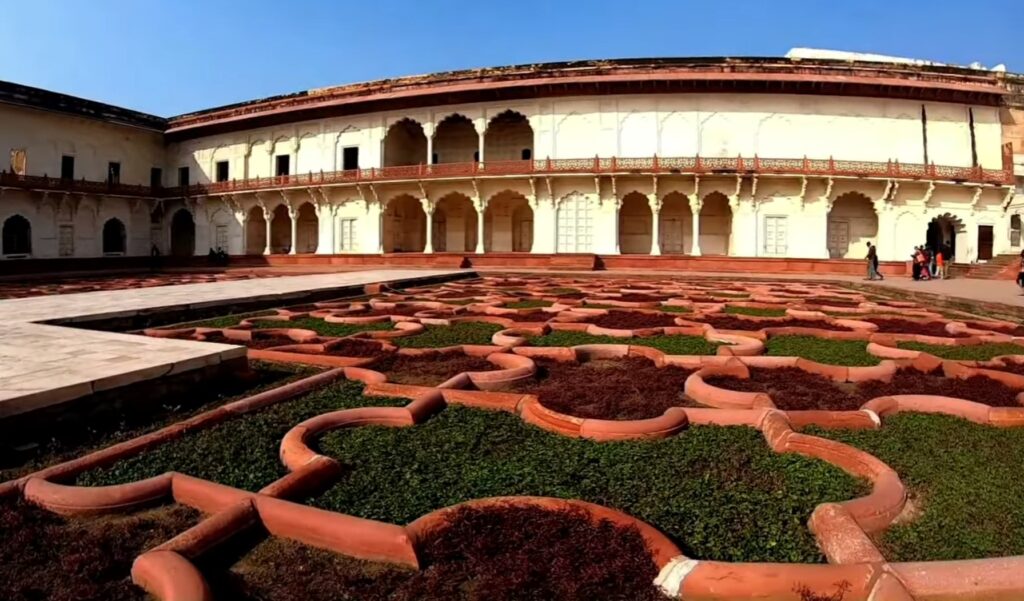
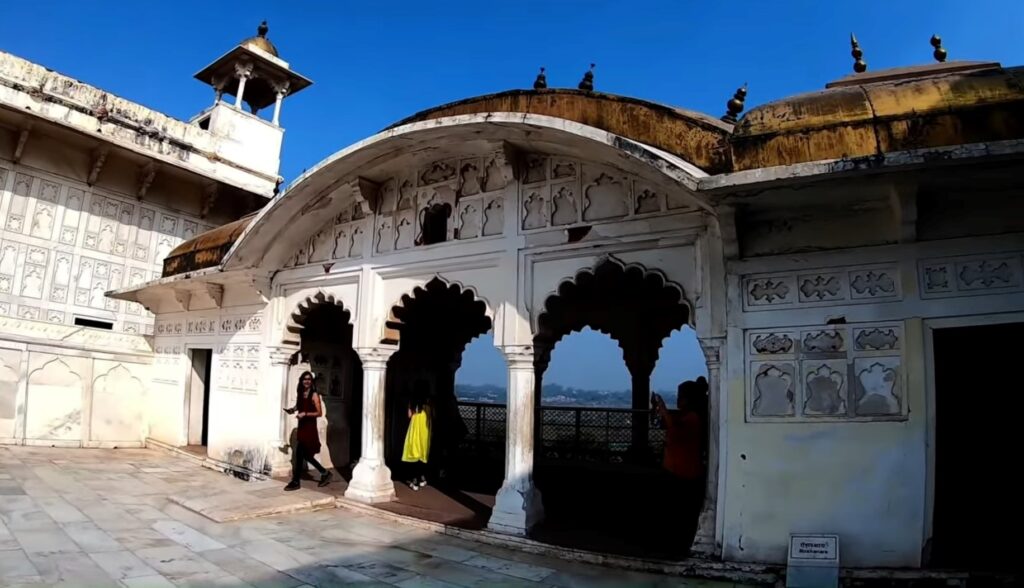
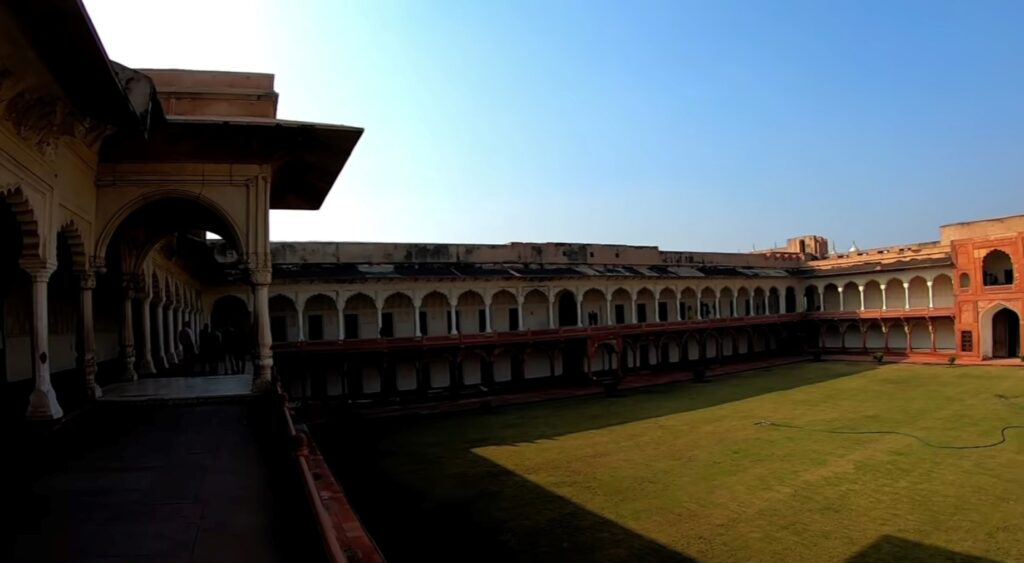
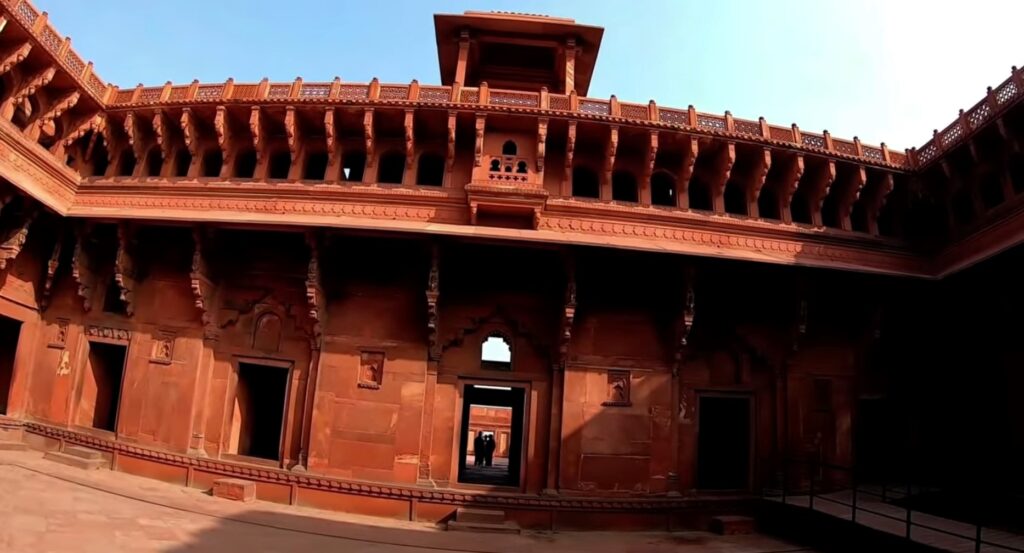
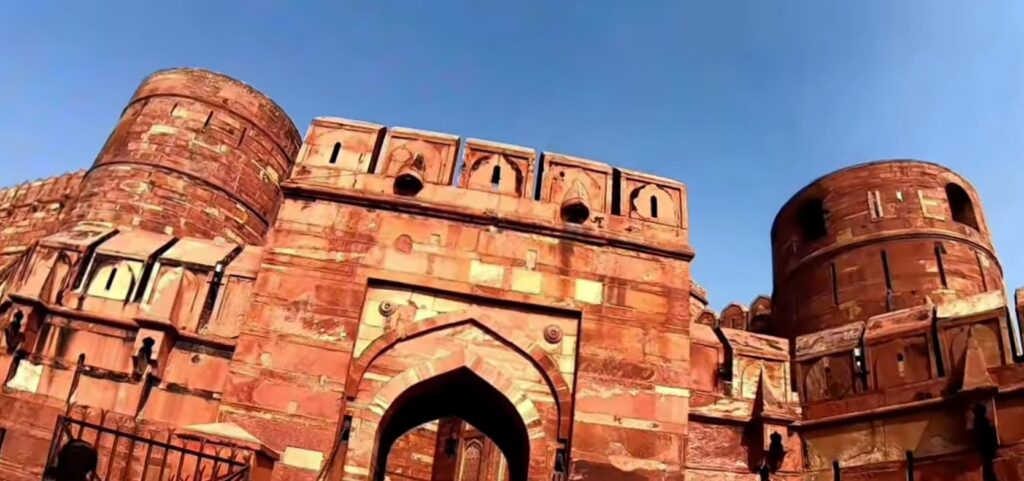
Agra Fort History
has a rich and complex history spanning over 500 years. The fort was initially built by Emperor Akbar in 1565, using red sandstone, and served as the imperial residence of the Mughal dynasty until 1638, when the capital was shifted to Delhi.
Over the centuries, the Agra Fort underwent several expansions, renovations, and modifications by various Mughal emperors. The fort was built in a strategic location on the banks of the Yamuna River, which served as an important transportation route and provided a natural defense for the fort.
One of the most significant events in the history of the Agra Fort was the imprisonment of Emperor Shah Jahan by his son Aurangzeb. Shah Jahan was confined to a room in the fort from where he could see the Taj Mahal, a monument he had commissioned for his beloved wife Mumtaz Mahal. This period of imprisonment lasted until Shah Jahan’s death in 1666.
During the British colonial period, the Agra Fort was used as a military garrison and underwent further modifications to accommodate British soldiers. The fort also served as a prison for Indian freedom fighters during the struggle for independence.
In 1983, the Agra Fort was declared a UNESCO World Heritage Site, recognizing its cultural and historical significance. Today, the fort is a popular tourist destination and attracts visitors from all over the world.
The architecture of the Agra Fort is a blend of Indian, Persian, and Islamic styles, reflecting the cultural fusion that took place during the Mughal era. The fort’s structures are arranged in a series of courtyards, each with its own unique design and purpose.
Some of the notable structures within the Agra Fort include the Jahangiri Mahal, the Khas Mahal, the Sheesh Mahal, and the Diwan-i-Khas. These structures feature intricate carvings, beautiful paintings, and stunning examples of Mughal architecture.
The Agra Fort is not only known for its architectural beauty but also for its historical significance. The fort was also used as a residence by several other Mughal emperors.
One of the most interesting aspects of the Agra Fort is the blend of architectural styles used in its construction. The fort’s buildings feature elements of Hindu, Islamic, and Persian architecture, making it a unique example of cultural fusion.
Today, the Agra Fort is a popular tourist destination and attracts visitors from all over the world. The fort’s beautiful architecture and rich history make it a must-visit destination for anyone interested in Indian history, culture, and architecture.
In recent years, efforts have been made to preserve and restore the Agra Fort’s structures and artwork. Restoration work has focused on preserving the fort’s original features and repairing damage caused by weather and pollution.
The Agra Fort is not only a popular tourist destination but also serves as an important cultural site for the people of India. The fort’s historical and cultural significance has led to it being featured on Indian currency and being designated as a UNESCO World Heritage Site.
In conclusion, the Agra Fort is a stunning example of Mughal architecture and a symbol of India’s rich cultural heritage. Its beautiful structures, intricate carvings, and historical significance make it a must-visit destination for anyone visiting the city of Agra. The fort serves as a reminder of India’s rich history and the importance of preserving its cultural heritage for future generations.

